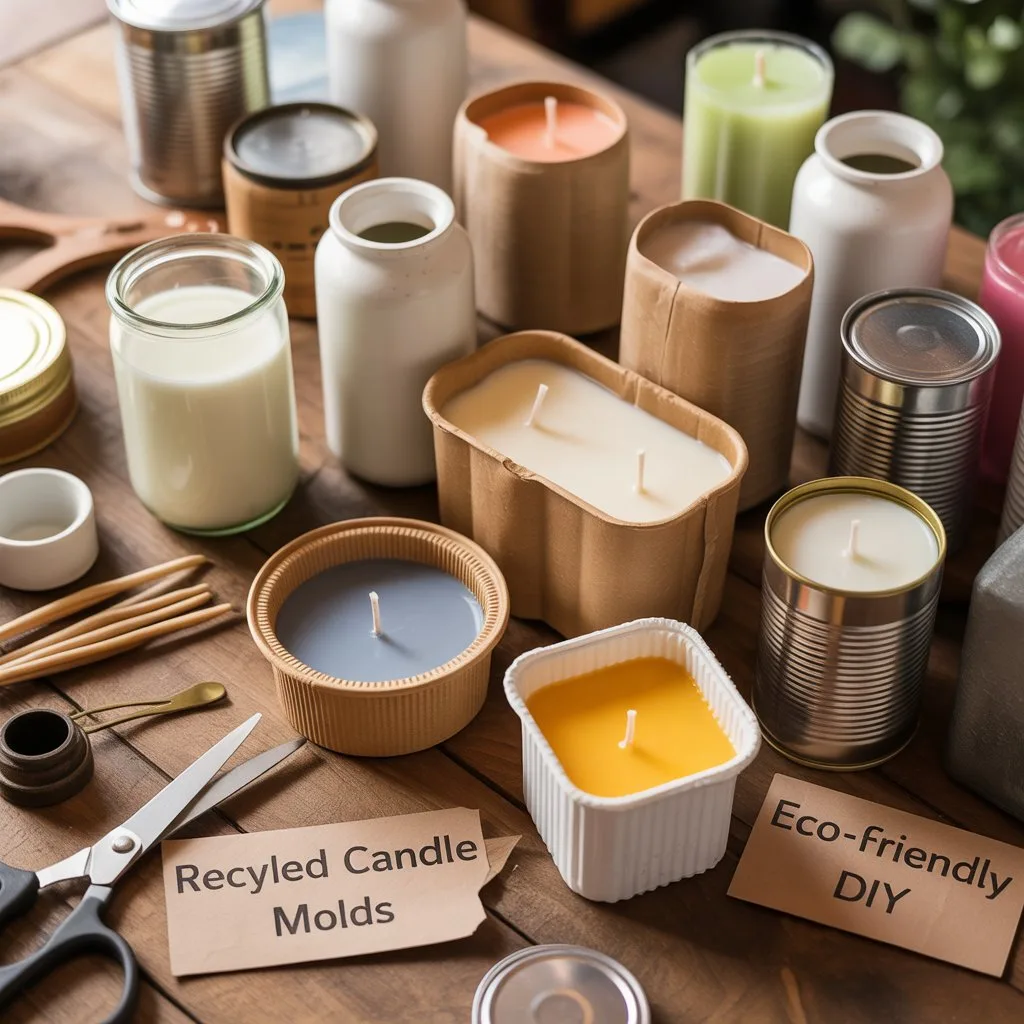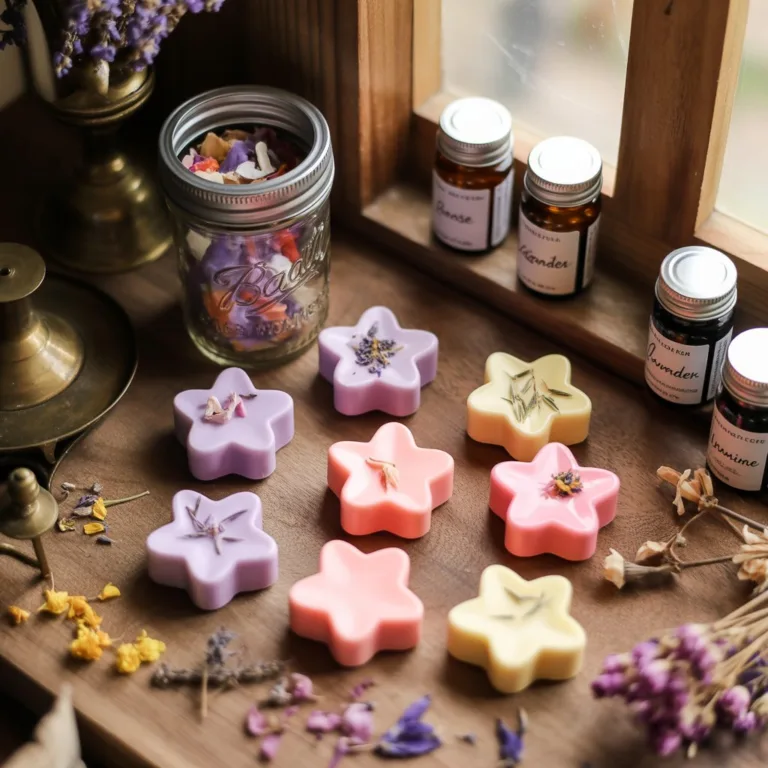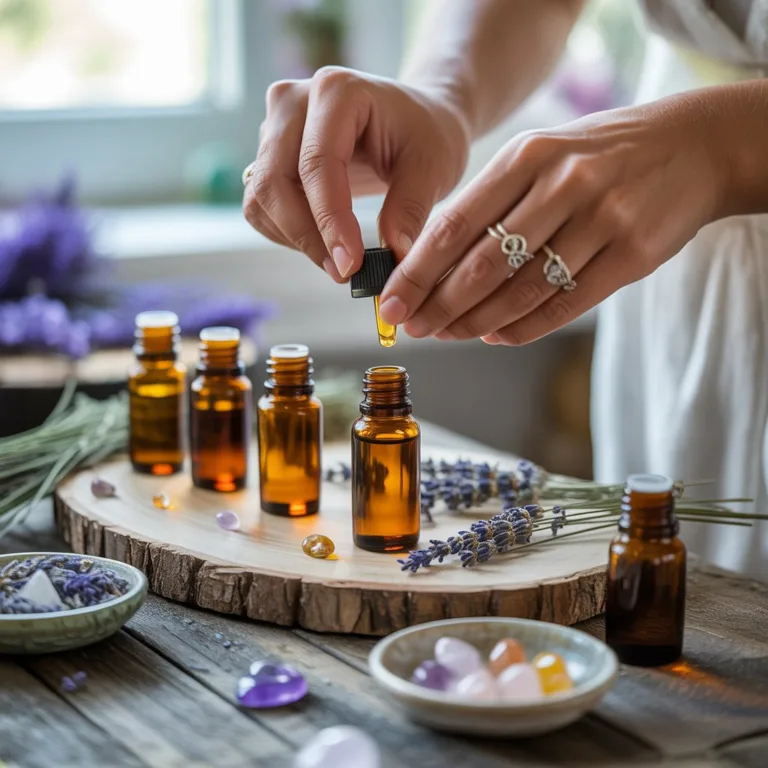Candle making has been practiced for centuries as both a craft and a form of self-expression. In today’s environmentally conscious world, this ancient art takes on new life when paired with sustainability. Creating DIY candle molds from recycled materials is not just a creative outlet—it’s an eco-friendly way to reduce waste, repurpose everyday items, and craft something beautiful and functional.

From the comforting flicker of light to the satisfaction of crafting with your hands, making candles offers sensory and emotional rewards. But when you add the challenge of designing your own molds from discarded materials, the process becomes even more meaningful. It combines artistic creativity, problem-solving, and a commitment to sustainability—all wrapped in the gentle glow of handmade candles.
The Value of Recycled Candle Molds
Candle molds define the final shape, size, and texture of your candles. Traditionally, molds are made from silicone, metal, or plastic—materials that often require industrial manufacturing and eventually contribute to waste. By creating molds from recycled materials, you bypass these environmental downsides and transform potential trash into tools for art.
Using recycled items such as plastic bottles, aluminum cans, cardboard tubes, or glass jars teaches important lessons about resourcefulness. You begin to see everyday waste not as something to discard, but as a source of endless possibility. Every candle you pour into a recycled mold becomes a small act of environmental stewardship.
This approach also aligns with the principles of circular design, where materials remain in use for as long as possible before returning safely to the earth. Recycled molds exemplify this philosophy beautifully: they extend the life cycle of discarded items while inspiring sustainable creativity.
Understanding the Basics of Candle Molds
Before crafting your own molds, it helps to understand what makes a good mold in candle making. A mold must:
- Withstand heat: Candle wax can reach temperatures of 60–90°C (140–195°F), so the material must resist melting or warping.
- Have a smooth interior: To release candles easily and maintain a professional finish.
- Be watertight and leak-free: Preventing hot wax from seeping through cracks or seams.
- Allow easy demolding: Flexibility or a simple shape helps remove the finished candle without damage.
Recycled materials meet many of these criteria when chosen carefully. Some might need slight modifications, such as reinforcing weak spots or adding release coatings, but overall, they perform impressively for low-cost, eco-friendly candle making.
Choosing and Preparing Recycled Materials
The joy of this craft lies in discovering new uses for everyday waste. Here are some of the most effective recycled materials for making DIY candle molds:
1. Plastic bottles and containers
Cut-off soda bottles, yogurt cups, or takeout containers make excellent molds. Their smooth surfaces create clean candle lines, and their shapes range from cylindrical to abstract. Just ensure they are clean and heat-resistant enough for warm wax.
2. Aluminum cans
Soda or beer cans are sturdy and ideal for tall pillar candles. Once cleaned, they can be cut to the desired height using scissors or a utility knife. Their metallic interiors help conduct heat evenly, which can give candles a consistent finish.
3. Cardboard tubes
Toilet paper or paper towel rolls can be lined with wax paper or aluminum foil to create rustic pillar candles. Their natural texture gives the finished candle an organic appearance that fits perfectly in eco-themed décor.
4. Glass jars and bottles
Old jars, condiment containers, or small glass vases can be reused as permanent molds or candle holders. These are perfect for container candles that don’t need to be removed from the mold.
5. Food packaging
Unusual packaging like fruit cups, muffin trays, or butter containers can produce creative candle shapes. Experimentation often yields the most delightful results.
Before pouring wax, always clean your recycled materials thoroughly. Remove labels, adhesives, and residues using warm water and mild soap. If necessary, coat the inside with a thin layer of vegetable oil or mold-release spray to ensure smooth removal later.
Designing Unique Candle Shapes
The shape of your candle affects both its function and aesthetic. One of the greatest advantages of using recycled materials is the variety of designs you can achieve without buying expensive molds.
- Cylindrical shapes: Created from bottles or cans, ideal for minimalist or modern styles.
- Square or geometric designs: Recycled food trays or small cartons work beautifully for clean, angular candles.
- Abstract or organic forms: Irregular containers or handmade papier-mâché molds yield artistic, one-of-a-kind shapes.
- Layered candles: By pouring wax in stages within tall recycled containers, you can create colorful gradients and scent layers.
Each design allows room for personalization—color blends, embedded dried flowers, or textured surfaces. With recycled molds, no two candles ever look exactly alike, turning each piece into a small, sustainable work of art.
Tips for Safe and Successful Candle Pouring
Working with recycled materials requires mindfulness to ensure both safety and quality. Keep these tips in mind during the candle-making process:
- Test your mold first: Pour a small amount of melted wax to check for leaks. Seal gaps with tape or modeling clay.
- Stabilize the wick: Use a pencil or chopstick across the top of the mold to hold the wick in place while the wax cools.
- Monitor wax temperature: Avoid pouring wax that’s too hot, as it may warp thin plastic molds or cause cracks in glass.
- Allow proper cooling time: Let candles set at room temperature to prevent surface defects or cracks.
- Demold gently: For rigid molds, warming the exterior slightly with your hands or warm water helps release the candle easily.
By taking care at each stage, your candles will not only look professional but will also burn evenly and last longer.
Creative Mold Reinforcements and Adjustments
Sometimes, recycled materials need small modifications to perform better as molds. A few creative tweaks can make a big difference:
- Add support: Reinforce flimsy containers like paper cups with masking tape or cardboard.
- Use release coatings: Brush the inside of molds with vegetable oil, petroleum jelly, or reusable silicone release spray for easy candle removal.
- Experiment with liners: Wax paper, foil, or thin silicone sheets can be inserted into irregular containers to create smooth surfaces.
- Combine materials: Mix rigid (metal or glass) and flexible (plastic or rubber) recycled components to make hybrid molds with unique textures.
These enhancements let you reuse the same molds multiple times, extending their life cycle and reducing waste even further.
Repurposing Candle Waste for New Projects
The philosophy behind making DIY candle molds from recycled materials extends naturally into reusing candle remnants. Leftover wax, broken candles, or old jars can all be transformed into new creations.
You can melt down wax scraps and pour them into your recycled molds to make layered or mosaic-style candles. Combine different wax colors to create marbled patterns, or mix scents for custom fragrances.
This approach completes the sustainability loop—nothing goes to waste. The process encourages experimentation, giving each candle its own story and character.
Educational and Community Applications
Candle making with recycled molds is a powerful educational tool for teaching sustainability, creativity, and science. Schools, eco-workshops, and community groups can use this activity to introduce concepts like material reuse, melting points, and design thinking.
For example:
- Science lessons can explore the chemistry of wax melting and cooling.
- Art classes can focus on form, color blending, and decoration.
- Environmental education programs can highlight waste reduction and upcycling.
Community candle-making events also promote collaboration and environmental responsibility. Participants can bring recyclable containers from home, transforming what might have ended up in landfills into functional, eco-conscious art pieces.
Exploring Texture and Decoration Techniques
Recycled molds often produce unique surface textures that store-bought molds can’t replicate. Embrace these imperfections as design features. Small ripples, folds, or seams can add character and authenticity to your candles.
To enhance these natural textures, try:
- Painting the finished candles with natural pigments or mica powders.
- Wrapping them in recycled paper or fabric for a rustic finish.
- Embedding decorative elements like dried herbs, citrus slices, or pressed flowers inside transparent wax.
- Using layered pours to create gradients and depth within your candle.
Each piece becomes a visual reminder that sustainability and beauty can coexist.
Maintaining and Reusing Your Molds
With proper care, many recycled molds can be reused multiple times. After demolding, wipe the interior with a soft cloth to remove wax residue. Avoid washing plastic or cardboard molds with hot water, as this may warp them.
Metal and glass molds, however, can be rinsed and reheated safely. To extend their lifespan, store them in a dry place away from direct sunlight. If a mold becomes too damaged to reuse, recycle or compost it responsibly.
By maintaining your molds, you create a sustainable crafting system that minimizes waste and maximizes creativity.
Blending Functionality and Mindfulness
Beyond their practical purpose, candles have deep symbolic and emotional meaning. They represent warmth, calm, and light—qualities that resonate strongly in our busy modern lives. Making candles from recycled molds adds another layer of mindfulness: the awareness that beauty can arise from what we discard.
The crafting process itself can be meditative. Measuring, melting, and pouring require focus and care, inviting a sense of calm and presence. The scent of wax, the sound of pouring, and the slow cooling process create a sensory experience that connects the maker to the rhythm of nature and time.
Encouraging Sustainable Crafting Habits
Sustainable crafting isn’t just about materials—it’s about mindset. Creating DIY candle molds from recycled materials encourages conscious consumption and creative problem-solving. It teaches that the tools of creation don’t have to come from a store; they can come from our own resourcefulness.
When you reuse packaging, bottles, or cans for candle molds, you model a lifestyle that values innovation and responsibility. This mindset can extend to other creative fields—woodworking, gardening, textile art—where sustainability and imagination work hand in hand.
Sharing this practice with others multiplies its impact. Every candle made from recycled materials carries a message of care for the planet and appreciation for the simple joys of handmade living.
The Light That Teaches
Each candle crafted in a recycled mold is more than just an object—it’s a symbol of transformation. It reminds us that sustainability is not about deprivation, but about reimagining what we already have.
When you hold a candle shaped by an old can or bottle, you hold proof that creativity can turn waste into wonder. The flicker of its flame illuminates both your space and your awareness, showing how small acts of mindful crafting can contribute to a larger culture of care.
So, gather your discarded containers, melt your wax, and let your imagination guide you. As your candles glow softly in the dark, they tell a story of renewal, creativity, and the beauty of giving new life to old materials.

Lucas Hartman is a DIY enthusiast and sustainability advocate focused on natural crafts and eco-friendly home décor. With a background in arts and design, Lucas creates tutorials that help families and hobbyists transform everyday recycled or organic materials into beautiful, functional projects.



